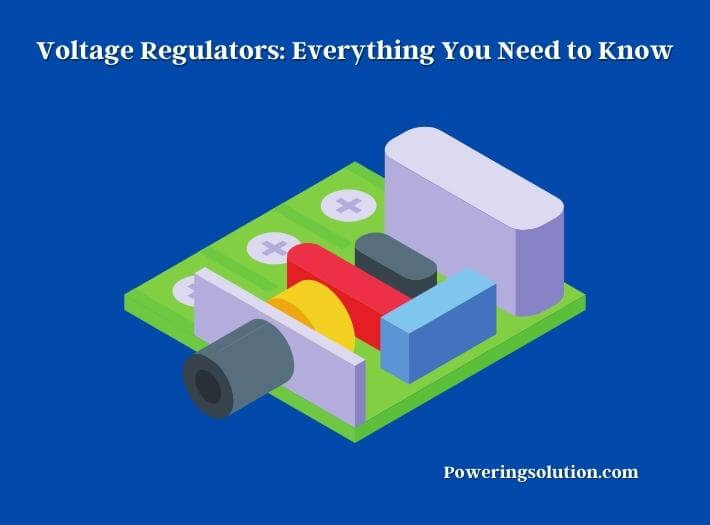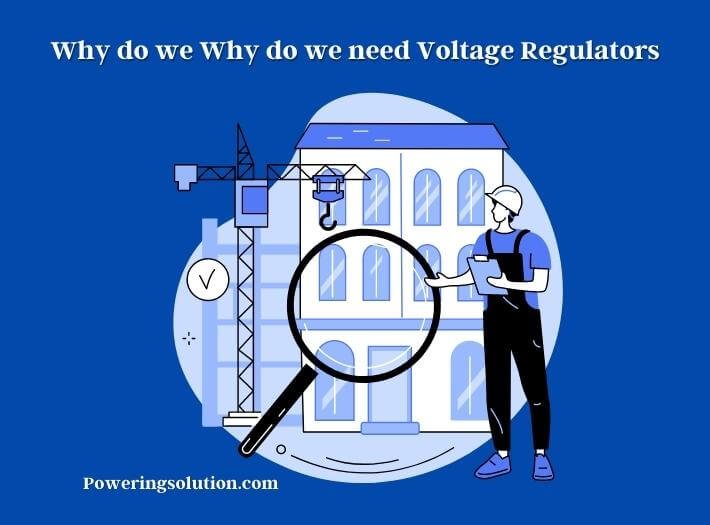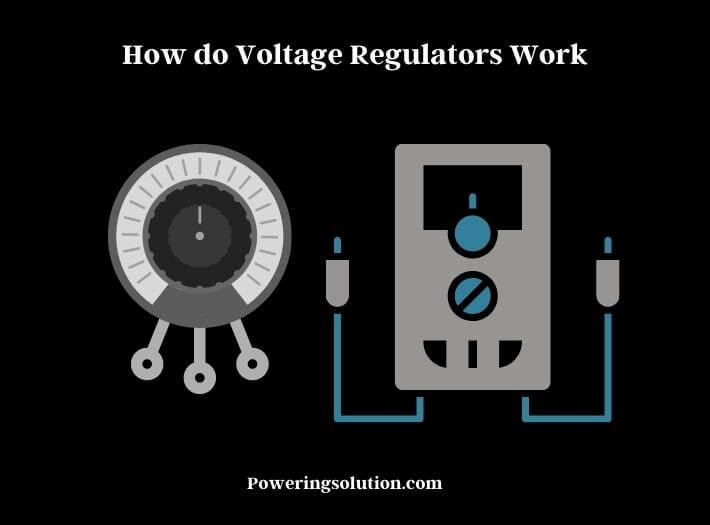Voltage regulators are crucial for many electronic devices to function properly. These devices help regulate the voltage supplied to electronic circuits, which prevents damage to sensitive components and ensures optimal performance. A stable voltage supply is especially critical for devices that require precise and constant power, such as computers, smartphones, and other electronics. Without a reliable voltage regulator, the circuits could experience fluctuations that lead to errors, crashes, or even permanent damage.

We will provide a comprehensive guide to voltage regulators, covering everything from the basics of how they work to the different types of regulators available and their applications. We will also explain how to choose the right regulator for your specific needs, as well as common problems that can occur and how to troubleshoot them.
What is a Voltage Regulator?
A voltage regulator is an electronic device or circuit that maintains a constant output voltage level, regardless of changes in the input voltage or load current. Its main function is to stabilize the voltage supplied to electronic circuits and devices, which ensures reliable and optimal performance.
A voltage regulator can be a standalone device or a built-in component within larger electronic devices. It works by detecting any fluctuations in the input voltage and adjusting the output voltage to counteract them, thus maintaining a stable voltage supply. Voltage regulators are essential for many electronic devices to function correctly and prevent damage to sensitive components.
Why do we Need Voltage Regulators?
We need voltage regulators for several reasons. Voltage regulators help to stabilize the voltage supplied to electronic circuits and devices, ensuring they receive a constant and reliable power supply. This is crucial for devices that require precise and constant power, such as computers, smartphones, and other electronics. Without a stable voltage supply, these devices could experience fluctuations that lead to errors, crashes, or even permanent damage.

It protects electronic devices from voltage spikes and surges that can occur due to power outages, lightning strikes, or other electrical disturbances. These spikes and surges can damage or even destroy electronic components, leading to expensive repairs or replacements.
Voltage regulators can also improve the efficiency of electronic devices by reducing power consumption and heat dissipation. If you maintain a stable voltage supply, devices can operate at their optimal efficiency, reducing energy waste and extending their lifespan.
How do Voltage Regulators Work?
Voltage regulators work by detecting any changes in the input voltage and adjusting the output voltage to maintain a stable level. They typically consist of three main components: a reference voltage source, a voltage comparator, and a feedback loop.
The reference voltage source provides a fixed voltage that the regulator compares to the input voltage. The voltage comparator then compares the two voltages and generates an error signal that indicates whether the output voltage needs to be increased or decreased. The feedback loop then adjusts the output voltage based on the error signal until the output voltage matches the reference voltage.

There are two main types of voltage regulators: linear and switching. Linear regulators use a transistor to regulate the output voltage while switching regulators use a switching element such as a transistor or a diode to rapidly switch the input voltage on and off, creating a regulated output voltage.
Several Types of Voltage Regulators
There are several types of voltage regulators, each with its unique features and applications.
Linear Regulators
These are the simplest type of voltage regulators and operate by using a transistor to adjust the output voltage. They provide a stable output voltage that is proportional to the input voltage, making them suitable for low-power applications.
Switching Regulators
These regulators use a switching element, such as a transistor or a diode, to switch the input voltage on and off rapidly, creating a regulated output voltage. They are highly efficient and suitable for high-power applications.
Zener Diode Regulators
These regulators use a Zener diode to regulate the output voltage. They are simple and low-cost but are only suitable for low-power applications.
Shunt Regulators
These regulators use a shunt element, such as a Zener diode or a transistor, to regulate the output voltage. They are highly efficient but generate a lot of heat, making them unsuitable for high-power applications.
Series Regulators
These regulators use a series element, such as a transistor or a resistor, to regulate the output voltage. They are efficient but require a stable input voltage to operate correctly.
IC Regulators
These are integrated circuit regulators that contain all the necessary components on a single chip. They are highly efficient, compact, and suitable for a wide range of applications.
Applications of Voltage Regulators
Voltage regulators have numerous applications in various industries, including electronics, automotive, aerospace, and telecommunications. Voltage regulators are used in power supplies to provide a stable and reliable voltage to electronic devices, such as computers, smartphones, and other electronics.
Voltage regulators are used in vehicles to regulate the voltage supplied to various electronic components, such as headlights, radios, and sensors.
Voltage regulators are used in aircraft to regulate the voltage supplied to various electronic systems, such as navigation, communication, and safety systems.
Voltage regulators are used in telecommunications equipment, such as cell towers and base stations, to provide a stable and reliable voltage to electronic components.
Voltage regulators are used in renewable energy systems, such as solar panels and wind turbines, to regulate the voltage supplied to the power grid.
Voltage regulators are used in medical equipment, such as ultrasound machines and heart monitors, to provide a stable and reliable voltage to electronic components.
How to Choose the Right Voltage Regulator?
Choosing the right voltage regulator depends on several factors, including the application’s power requirements, efficiency, and cost considerations.
Input and Output Voltage
The voltage regulator’s input and output voltage must be compatible with the application’s power requirements. The input voltage must be within the regulator’s input voltage range, and the output voltage must match the load’s voltage requirements.
Power Requirements
The voltage regulator must be capable of providing the required power to the load. The power rating of the regulator must be greater than the load’s power requirements.
Efficiency
The efficiency of the voltage regulator determines how much power is lost as heat during the regulation process. Higher efficiency regulators are more desirable as they waste less power as heat, resulting in a longer operating life and lower operating costs.
Load Regulation
Load regulation is the ability of the voltage regulator to maintain a constant output voltage as the load varies. A voltage regulator with good load regulation is essential for applications where the load varies significantly.
Line Regulation
Line regulation is the ability of the voltage regulator to maintain a constant output voltage as the input voltage varies. A voltage regulator with good line regulation is essential for applications where the input voltage varies significantly.
Cost
The cost of the voltage regulator is a crucial factor in selecting the right regulator. High-end voltage regulators with advanced features and high efficiency can be expensive, while low-cost regulators may not meet the requirements of the application.
Common Voltage Regulator Problems
Voltage regulators can experience several problems that can affect their performance and reliability.
Overheating
Voltage regulators can overheat due to high input voltages or excessive current flow. Overheating can damage the regulator and cause it to malfunction or fail.
Noise
Voltage regulators can generate noise or interference that can affect the performance of nearby electronic devices. This can be caused by poor grounding, inadequate shielding, or low-quality components.
Voltage Drop
Voltage regulators can experience a voltage drop when the load exceeds the regulator’s maximum output current rating. This can cause the output voltage to drop below the load’s operating voltage, leading to malfunction or failure of the load.
Output Ripple
Voltage regulators can produce output ripple, which is a fluctuation in the output voltage caused by changes in the load current. Output ripple can cause interference with sensitive electronic devices.
Stability Issues
Voltage regulators can experience stability issues, leading to oscillation or instability of the output voltage. Stability issues can be caused by inadequate compensation or poor circuit design.
ESD (Electrostatic Discharge) Damage
Voltage regulators can be damaged by electrostatic discharge, which can occur when handling or installing the regulator. ESD can cause permanent damage to the regulator or reduce its operating life.
How to Troubleshoot Voltage Regulators?
If you are experiencing problems with a voltage regulator, there are several steps you can take to troubleshoot the issue.
| Check the Input Voltage | Ensure that the input voltage to the regulator is within the regulator’s specified operating range. If the voltage is too high or too low, it can cause the regulator to malfunction or fail. |
| Check the Load | Ensure that the load connected to the regulator is within the regulator’s specified operating range. If the load is too high or too low, it can cause the regulator to malfunction or fail. |
| Check for Overheating | If the regulator is overheating, ensure that it is mounted in a well-ventilated area and that there is adequate airflow around the regulator. Check that the input voltage and load are within the regulator’s specified operating range. |
| Check for Short Circuits | Check the circuit for any short circuits or other wiring faults that could be causing the regulator to malfunction. |
| Check for ESD Damage | If the regulator was recently handled or installed, check for electrostatic discharge (ESD) damage. Look for signs of physical damage or burned-out components. |
| Test the Regulator | Use a multimeter to test the regulator’s output voltage and current. Compare the results to the regulator’s specifications to determine if it is functioning properly. |
Always follow proper installation and handling procedures when installing a new regulator, and ensure that it is within its specified operating range.
Advantages of Using Voltage Regulators
There are several advantages to using voltage regulators in electronic circuits. Voltage regulators provide a stable output voltage, which is essential for the proper operation of electronic devices. The output voltage remains constant even when there are fluctuations in the input voltage or changes in the load.
Voltage regulators are highly efficient at converting input voltage to a stable output voltage. They minimize the amount of energy lost as heat, which helps to conserve power and reduce operating costs.
Voltage regulators help to protect electronic devices from overvoltage and under-voltage conditions, which can cause damage or failure. They also provide protection against short circuits and other electrical faults.
Voltage regulators help to reduce noise in electronic circuits by providing a stable output voltage. This can improve the performance of sensitive electronic components and reduce interference.
Using voltage regulators can simplify circuit design by eliminating the need for additional components that would otherwise be required to regulate the voltage. This can save space, reduce cost, and improve reliability.
In a Nutshell
Voltage regulators are an essential component of electronic circuits. They provide a stable output voltage, protect electronic devices from overvoltage and under-voltage conditions, reduce noise in electronic circuits, and simplify circuit design. With the advancement of technology, there are now several types of voltage regulators available, each with its unique features and applications.
Choosing the right voltage regulator for a particular application is essential to ensure proper operation and reliability. Proper handling, installation, and troubleshooting are also important to prevent voltage regulator problems and ensure optimal performance.
Voltage regulators play a critical role in the functionality of electronic devices, and understanding their applications and advantages can help electronic engineers and hobbyists make informed decisions when designing and building electronic circuits. The energy-efficient building design has become an increasingly popular topic in recent years. Because its building design offers a way to achieve both of these goals while also providing numerous other benefits.
